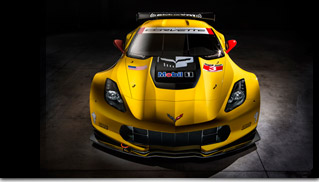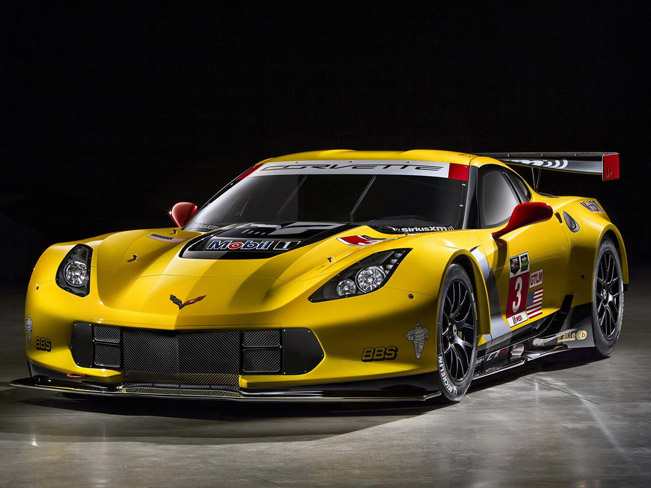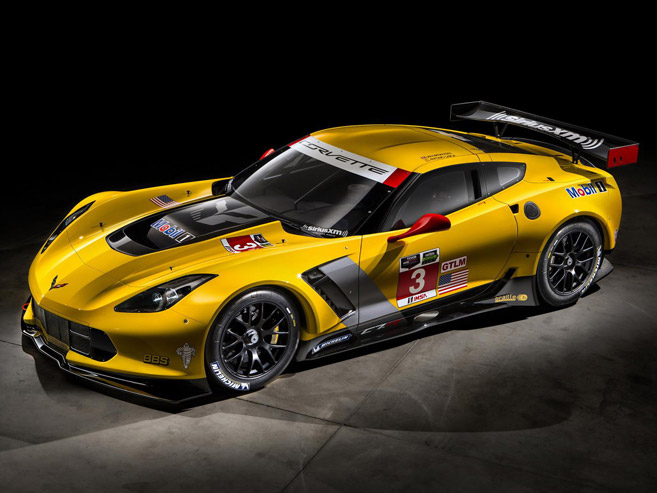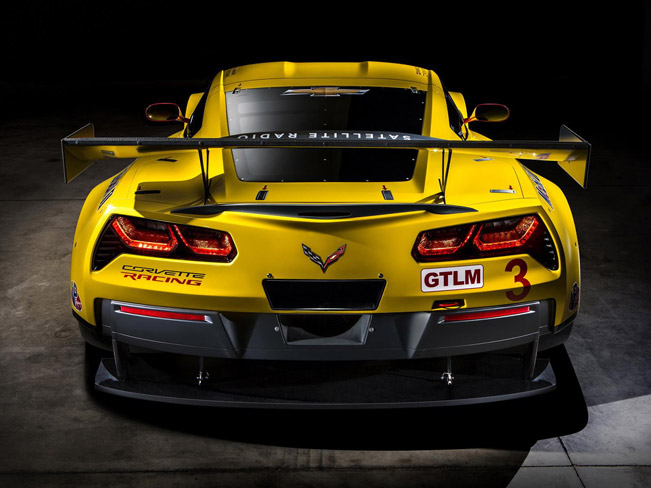 2014 Chevrolet Corvette C7.R Racecar is the next exclusive vehicle in that was premiered in Detroit and was co-developed with the all-new 2015 Corvette Z06. The two models represent the closest link between Corvettes built for racing and the road. Both share great levels of engineering and are equipped with new technologically advanced components such as the chassis architecture, engine and aerodynamics.
2014 Chevrolet Corvette C7.R Racecar is the next exclusive vehicle in that was premiered in Detroit and was co-developed with the all-new 2015 Corvette Z06. The two models represent the closest link between Corvettes built for racing and the road. Both share great levels of engineering and are equipped with new technologically advanced components such as the chassis architecture, engine and aerodynamics.
Corvette Racing will enter two C7.Rs in 2014 that will compete at the 52nd Rolex 24 At Daytona on January 25-26, and the GT Le Mans class in 11 races around North America. The team is also is expected to participate in June at the 24 Hours of Le Mans.
Last year, Corvette Racing won five races and swept the manufacturer, team and driver championships in the GT class for a second season in a row. This success lies in the technology transfer between Corvette production cars and race cars. A lot of the architectural and aerodynamic features of the C7R are based on equivalent components and technologies from the 2015 Corvette Z06.

The new aluminum frame can be found on both vehicles. It was built with the extensive use of advanced manufacturing materials such as laser welding, Flow-drill-machined fasteners and a GM-patented aluminum spot-welding process. The result is that the production structure is much stronger than previous one found in the C6.R.
The second feature which both models share is the direct fuel injected engine, which is expected to deliver better efficiency and can make a significant difference in long-distance endurance racing such as Daytona and Le Mans.
In terms of aerodynamics, Corvette C7.R includes forward-tilted radiator, functional hood and front-quarter panel vents, and rear transmission and differential cooling intakes. The highlight here is that Z06 and C7.R share strategies for enhanced cooling and aerodynamic downforce, including similar front splitters, rocker panels, and front- and rear-brake cooling ducts.

How about the differences between the race car and production Corvette Z06? The first instance is that C7.R carries over the powertrain for the C6.R because of limitations of the GT rules, which constrict the maximum displacement to 5.5L, and prohibit forced induction. On the other hand, 2015 Z06 sports a supercharged 6.2L engine which is capable of producing 625 horsepower (460 kW). Nonetheless, both engines are based on the historic small block architecture.
C7.R also sports modified suspension in order to accommodate wider racing tires and larger brakes, according to the GT regulations. The ducts on the C7.R are positioned on each of the rear quarter panels, above the brake ducts, which will draw air to help cool the race car’s transaxle and differential.
Furthermore, the rear wing is now made a more more-significant part of vehicle’s aero package. A larger radiator inlet has the added advantage of generating smoother airflow over the rear wing and making its utilization more efficient to the handling and stability of the race car at high speed.

Source: Chevrolet